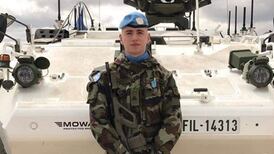Geoscientist David Ball could see tide levels, wind strength and wave height on the internet before, during and after Hurricane Katrina. So why didn't the facts reach New Orleans?
The day after hurricane Katrina struck, the US and the world were dismayed to find, as President Bush put it, "Big Easy had not dodged the bullet". The levees had failed, and New Orleans had flooded.
However for geoscientists around the world, the dismay began the day before. Although at home with the flu, I was able to watch the inundation of New Orleans in real time on the internet. I even attempted to e-mail a warning to local television station Channel 4 but to no avail.
The US has an enviable system for gathering water data. The United States Geological Survey (USGS) collects water resource information from 1.5 million sites across the country, and provides this National Water Information System data to the public and anyone in the world with an internet connection, easily, rapidly and for free.
The remarkable feature of the service is the real-time data from 5,000 sites, where water levels are measured at the coast and in lakes and rivers and automatically relayed via satellite, telephones or radio every five to 60 minutes. During critical events it is relayed even faster.
The USGS had 30 stations recording real-time water levels, river flows, air pressure, wind speed etc in Lake Pontchartrain and the rivers and drainage canals feeding into the lake. There are also another 19 gauges in the Mississippi delta and river near New Orleans and more real time data coming in from systems run by the National Oceanographic and Atmospheric Administration on wave height, tide, wind speed, gust strength and air pressure from buoys and rigs.
The US Army Corps of Engineers and the Sewerage and Water Board of New Orleans provide easily accessible maps showing the height of the floodwalls and levees in and around the city. The Federal, state and municipal authorities, and even observers in Ireland, all had online access to the data and graphs and maps.
It was possible from a desk in Dublin to obtain real-time data of conditions before, during and after the hurricane made landfall. Watching the wind pick up, the height of the waves, the tide water levels on the coast and on the lake and canals was like watching live TV coverage of the Twin Towers' awful collapse.
It didn't require much technical knowledge to link real-time water levels with the maps of floodwall heights and realise that there was a catastrophe.
The floodwall on the 17th street canal was, in several places, just 10 feet above sea level. It was shortly after 2pm in Ireland, and 8am in New Orleans, that the water levels rose to 12-13 feet in the canals linked to the sea and Lake Pontchartrain.
The catastrophe was that nobody said anything to the public as it was happening. The flooding of a huge city like New Orleans does not happen in an instant. There is time to alert and advise the remaining people that the rising water they can see in the streets is not just rainfall that will be soon cleared by the pumps, but instead this is the real thing, this is the lake and the sea.
The system for providing public service information for the people did not work.
It is inconceivable that US geoscientists were not watching water information as it came in. All the eyes of the world were on New Orleans.
What the inquiries that followed Katrina may find is that the system for effectively reporting the information to both the federal and state authorities and the important news networks, failed. The system was giving real-time information from the ground, but no one managed to give a real-time alert to the people on the ground.
We do not experience hurricanes, but we have our own "watery events", and can learn from the US.
We have floods hitting Clonmel, groundwater inundating houses in south Galway, high rainfall causing land slides that destroy graveyards in Co Mayo, and even the Taoiseach has got his knees wet in Drumcondra when the Tolka broke its banks.
The message is that monitoring and early warning systems won't work unless the state continues to invest in people who can interpret the information and, most important, have the confidence to know when to "press the red button".
It would also be useful for our own agencies to provide real-time information for the public, so that people in Kilkenny, or Clonmel, can see a flood as it makes its way down the river towards them, and before it actually reaches them.
David Ball is a consultant hydrogeologist and Member of the Royal Irish Academy Academy Committee for Geosciences. He is also president of the International Association of Hydrogeologists (Irish Group)








